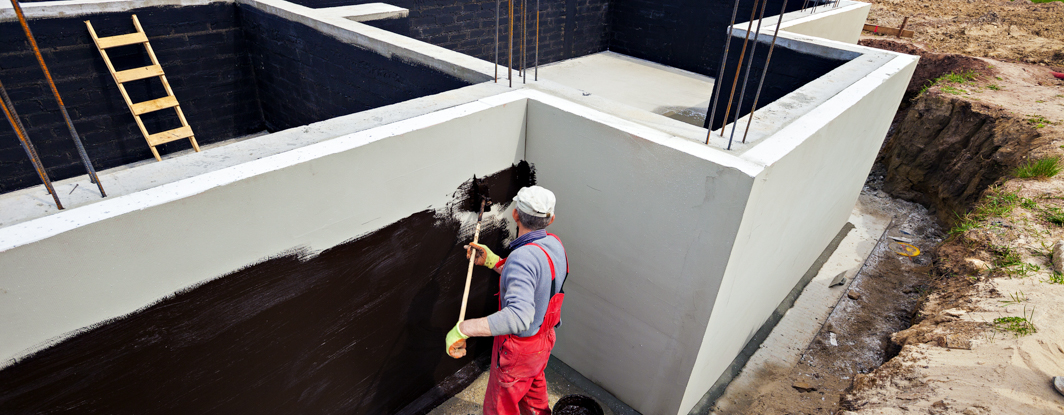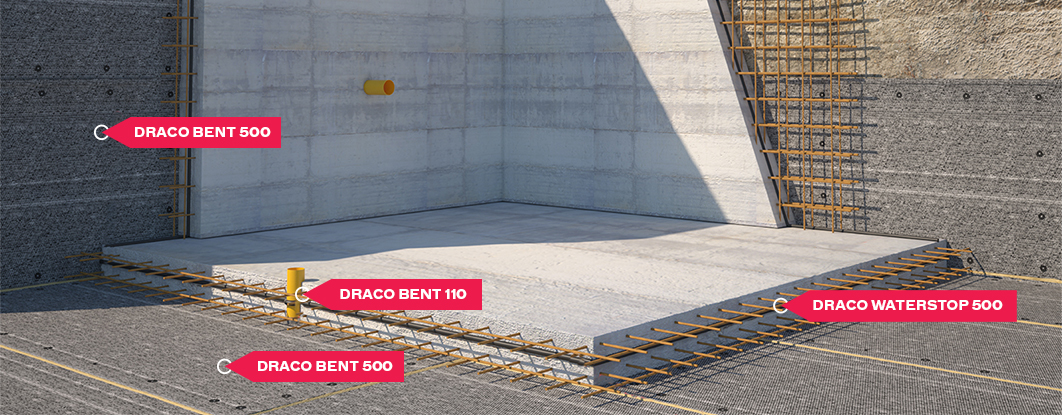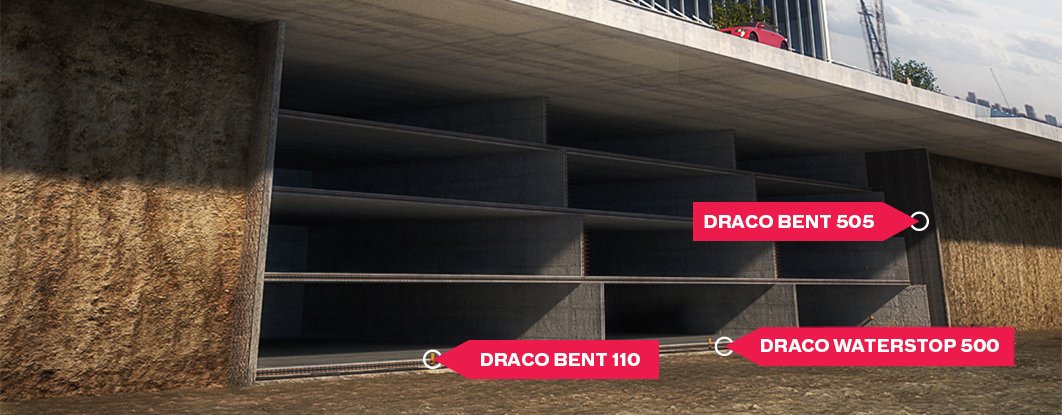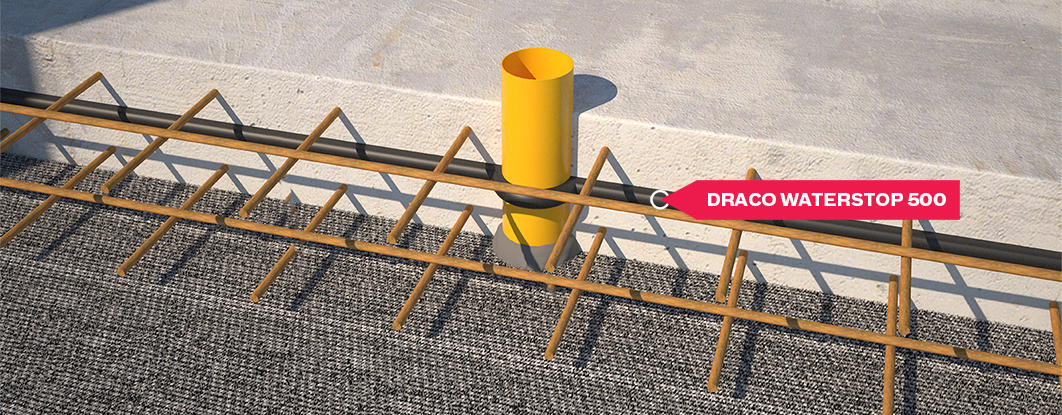Foundation waterproofing
If you are looking for solutions for properly and well-insulated foundations, you are in the right place.

Foundations are an important element of any building, and properly and adequately performed waterproofing will enable their durability and protection.
Waterproofing of foundation slab

Parts of a building under the terrain level are exposed to multiple effects from water such as moisture in the ground, leaching waters, and underground waters. Each of these effects has the aim of penetrating through the structure into the internal underground sections, resulting in detrimental action on the structural elements of the building and degrading the quality of life. To prevent water from entering the structure at all, waterproofing is best placed on the outside section.
Adequate waterproofing of the foundation slab
Bentonite membrane such as DRACO BENT 500 is a single-ply membrane with bentonite granules between two geotextile layers which can absorb water, i.e., in contact with water, it’s transformed into a thick water-impermeable gel that protects the structure at hydrostatic pressures of up to a depth of 70 meters. This property causing waterproofing to work with water under pressure is unique and the DRACO BENT membrane is in front of all other waterproofing methods.
The DRACO® BENT 500 is laid with the dark gray / woven side of the geotextile facing the concrete, which is insulated for both horizontal and vertical applications. The strips overlap min. 10.0 cm at all edges. The edges at the end of the roll are shifted to avoid triple folding. DRACO® BENT 120 mechanical fasteners or staples (industrial staples) are used during installation to fasten the straps (mainly on folds).
Wherever possible, the DRACO® BENT 500 is placed inside the formwork, before concreting, to achieve membrane embedding in the concrete. It is important to note that the substrate should be leveled and well compacted, and the underlying concrete may be required as part of the groundwater control at the construction site at, e.g. clay soils, but is not a necessary prerequisite for the installation of DRACO® BENT 500 membrane.
When installing on already concreted walls, the surfaces should be free of large cavities or protrusions. Cavities or pits, cracks and dilatations are filled with DRACO® FIX 130 cement mortar, DRACO® BENT 110 paste or bentonite mortar (DRACO® BENT 100 granules + water).
All penetrations through concrete, spacer holes, etc., must be filled on the outside with a suitable non-shrink mortar (such as DRACO® FIX 130) or bentonite mortar (DRACO® BENT 100 + water granules) before installing the DRACO® BENT 500.
The DRACO BENT system requires minimal preparation of surfaces, without the need for using lean or protective concrete, works under difficult conditions, and easily treats structural details. In reducing the layers, the amount of excavation is reduced as well as quickening construction. The DRACO BENT 100 granules and DRACO BENT 110 paste are essential components of systems on construction sites that seal properly every penetration, critical structural detail, or membrane end.
Concreting in segments results in concreting sections where small fissures appear, due to poorer binding between old and new concrete, and is an easy path for water. To prevent any possibility of the passing of water, the concreting section is additionally sealed using the DRACO WATERSTOP 500 strip which, when making contact with moisture, swells up and is injected into the small fissures.
Foundation waterproofing is an important part of the general construction work. The durability of the foundation and the building depends on the quality of the materials and the used technology.
Use only quality materials and pay the waterproofing the attention it deserves. DRACO waterproofing systems are designed precisely to make your homes, offices and premises safe and comfortable to live in.



